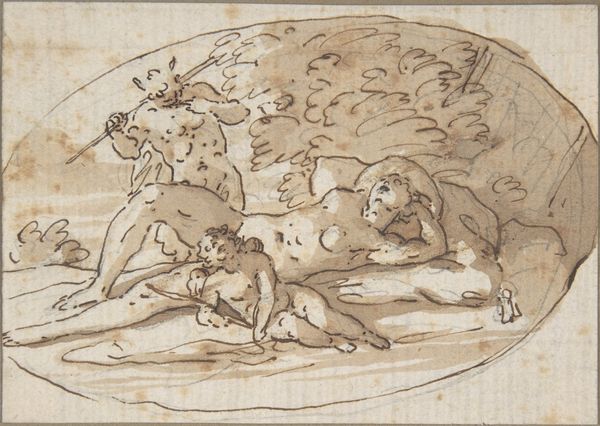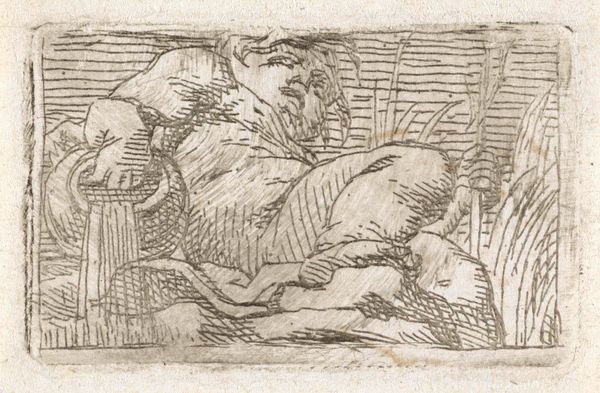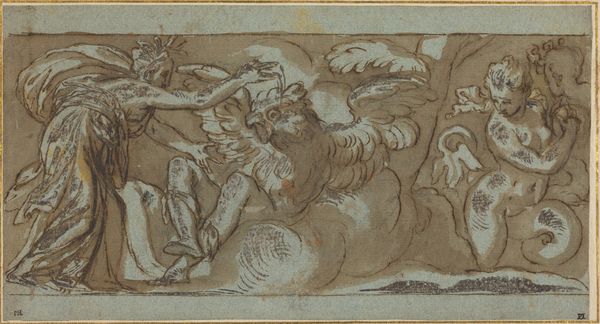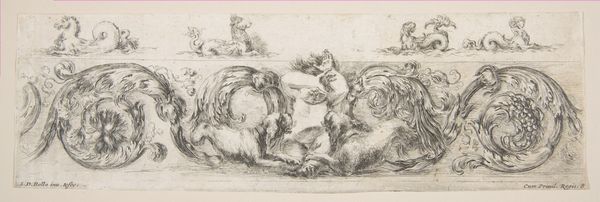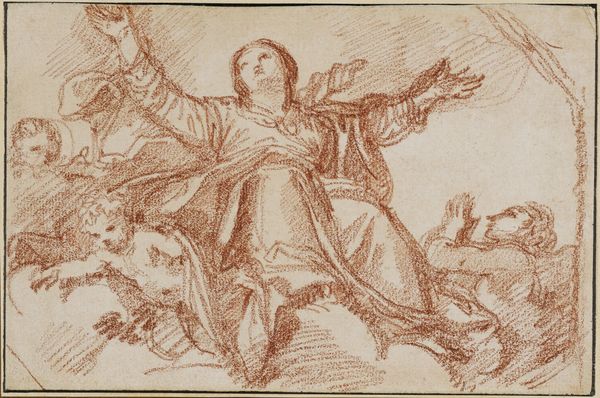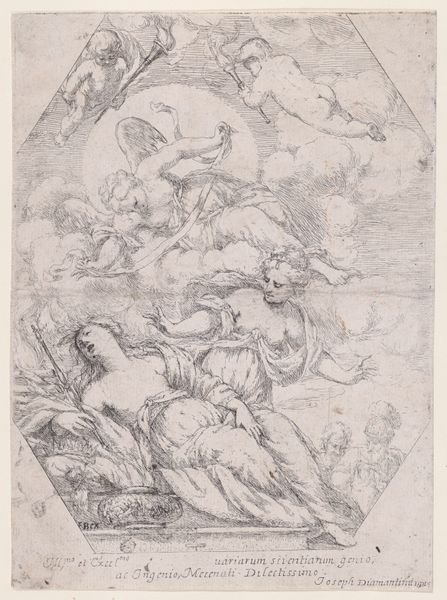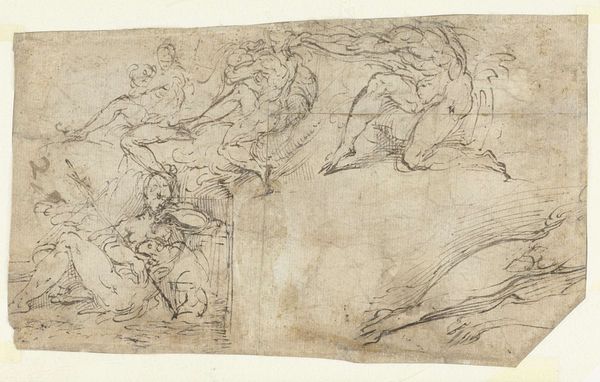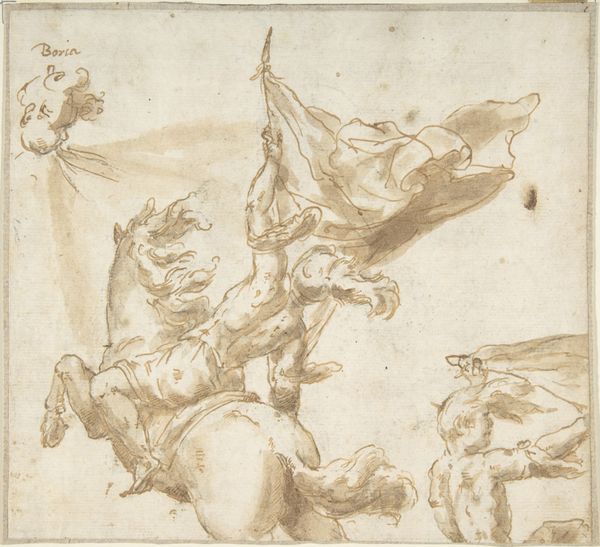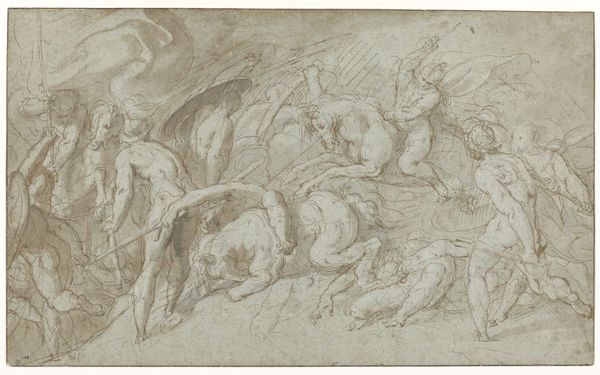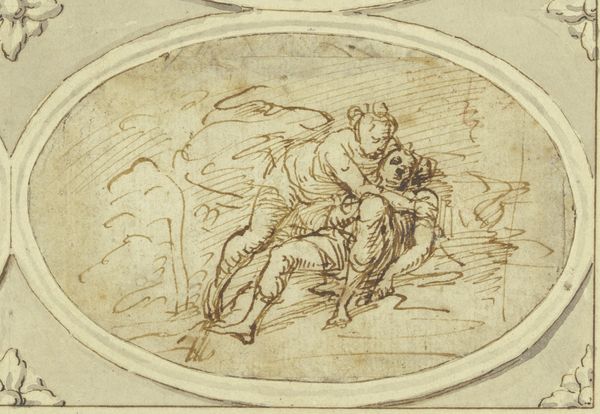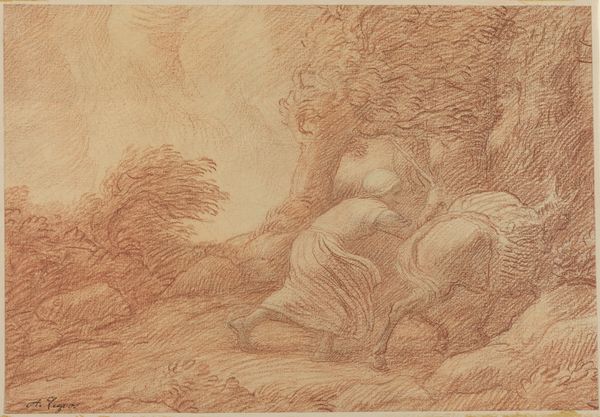
drawing, dry-media, charcoal, pastel
#
drawing
#
baroque
#
pencil sketch
#
charcoal drawing
#
dry-media
#
pencil drawing
#
underpainting
#
charcoal
#
pastel
Dimensions: height 132 mm, width 175 mm
Copyright: Rijks Museum: Open Domain
Curator: Immediately, I am struck by the melancholy stillness despite the subject matter. There’s something deeply unsettling about this composition. Editor: This is “Still Life with Hare and Fowl” by Jan Weenix, probably created sometime between 1650 and 1719, using charcoal, pastel, and other dry media. It's an excellent example of Baroque still life drawing. Curator: It's the rendering in red chalk that grabs me first. The scene depicts dead animals, presumably game, arranged with a perfunctory dishware—that single downward-tilting plate, it feels ominous. What meaning do you find here? Editor: Hunting scenes, or "game pieces" as they were often called, served as symbols of status and abundance for wealthy patrons during the Baroque era. Displaying dead game demonstrated one's power over nature. This artwork reflects social inequalities. Curator: Certainly, but Weenix also invests these scenes with deeper allegorical weight. Consider the careful arrangement, the symbolic placement of the animals. A hare, traditionally a symbol of vulnerability and death, is juxtaposed with fowl—often linked to sacrifice. Editor: True. And it's difficult to ignore how these depictions normalize a sense of brutal domination. It is hard to escape the colonialist mindset where resources are there for taking by the select few. Curator: Though I agree on the point of normalization, I feel Weenix stops short of endorsing or condemning. Perhaps instead he's revealing the inherent duality of such displays. Abundance for some at a clear cost to others and nature itself. Consider the enduring potency of that image—a sentiment echoing through time. Editor: Maybe the somber tone makes the violence harder to miss? The scene has more moral implications that can spark dialogue on human impacts. Curator: That’s precisely what makes this image so powerful. It makes visible this dynamic for ongoing cultural reconsideration. The artist provides this visual cue to engage in discourse about those very inequities. Editor: Ultimately, Weenix has provoked thoughts about the ethics and social implications around the consumption and natural world that we might not have expected to engage with so thoroughly.
Comments
No comments
Be the first to comment and join the conversation on the ultimate creative platform.
